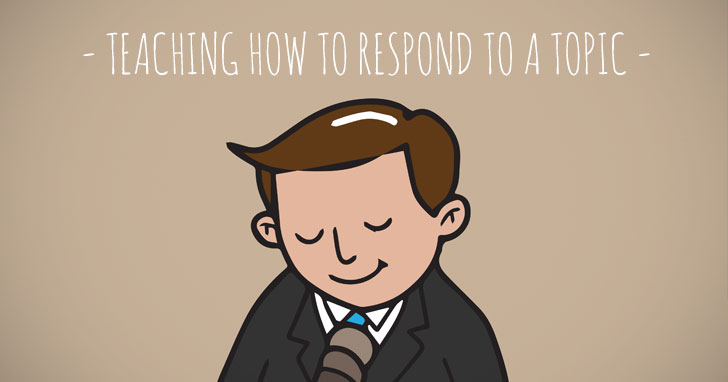From I Donít Want to Talk about It to I Canít Wait to Talk about It!: Turning Your Students on to Discussion


It can be difficult to introduce the topic and get students organized into groups. And once that happens, the conversation often stalls after a few moments and students sit looking at each other, pull out homework to work on, or start discussing something else.
These problems have a number of causes: students don’t understand the topic of discussion, or they feel, correctly or incorrectly, they have nothing to say about it. Or they may not have the language for discussing it. They may be reluctant and unsure of how to participate in a group setting.
However, all of these concerns can be addressed and successful group discussion launched with some preparation and anticipation of concerns.

Students may have a number of reservations about working in conversation groups for number of reasons. One might be not liking group work in general—many students, especially those who have been successful academically, may prefer to work independently. They may have real or perceived personality conflicts with their peers in class. They may not like turning over part of their class grade to a group process. All of these concerns may be at least alleviated by discussing the value of groups, establishing boundaries for behavior within the groups, and grading students individually for their group contribution.
The next, and easiest to address, concern with group discussion and why it stalls is that students simply don’t understand the topic, often because of cultural or language differences. College internships, “helicopter parenting,” the debates surrounding school uniforms and gun control are all cultural topics students may have limited or no prior exposure to. This can be addressed by providing some initial readings and leading discussion on the topic and its different perspectives.
Once students have been introduced to and understand a topic, the next barrier might be having nothing, or more likely, feeling they have nothing to say on a topic. This is probably due to a still superficial understanding of the topic and not having analyzed or reflected on it much. Some methods to address this concern is further introduction of the topic and its different perspectives, perhaps through a different medium such as clips on the debate drawn from U-Tube, or reflection from the students in the form of journal writing.
Once students have developed an understanding of a topic and some preliminary positions on it, they may still not be able to discuss it well, for a number of reasons, such as not having control of the language and vocabulary related to the topic. This concern might be addressed through further reading on the topic and journal or composition writing based on the topic, with the requirement that vocabulary drawn from the reading be used in the journal or composition response.
A final concern that might need to be addressed once students have an understanding of the topic and can use its language to discuss their perspective is understanding the nature of an academic discussion. When the term “academic discussion” is raised, people often think of more formality and courtesy than in everyday conversation. While this is certainly true, academic discussion is more than just a polite conversation. Rather, there is a demand to actually delve into and analyze a topic as well as thoughtfully listen to and respond to other participants and invite them to extend their responses. While a “conversation” in the everyday sense of the word may trail off after a couple of exchanges on the topic of the weather or one’s weekend plans, usually to all party’s satisfaction as they go about their daily routine, in an academic discussion there is an obligation to sustain the dialogue to the best of one’s ability until really all of its aspects of the topic have been explored.
Surprisingly, a discussion can die an early death even if the prior steps are taken. This may be due to a number of reasons: student motivation, discomfort with the topic, general malaise and boredom, and so forth. Students, however, should be encouraged and even held accountable for further exploring a topic, perhaps by taking the topic to an online format by posting on a class discussion thread responses to peers’ comments and their own comments on the topic. Some other ideas are to listen to debates or discussion on the top, found on YouTube — discussions and debaters on almost any topic can be found on YouTube. If the instructor provides one or several links, students can then listen and take notes and can bring these ideas back to their groups for discussion.
Getting students to really engage in an academic discussion is not easy work. It involves building the cognitive structures needed to understand the topic and its language. Also required for a good academic discussion is an understanding of group process and how to work within a group. Beyond simply understanding how to interact in a group setting and basic understanding of how to work in a group, a good group discussion also requires it participants to know how to really engage in a topic and extend it, and seek help from peers elaborating on the topic so that it doesn’t “die an early death.” If these guidelines are followed, good academic discussions can be held.